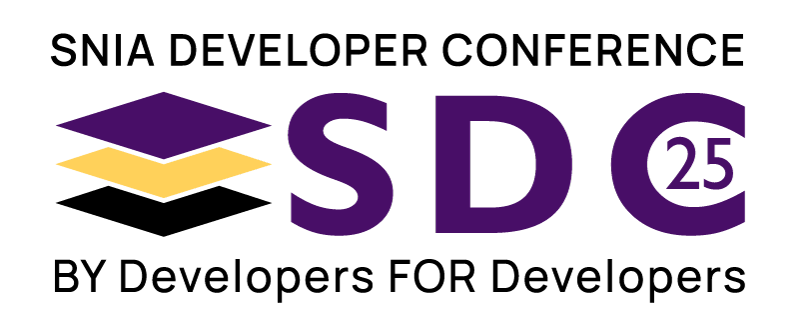SNIA Developer Conference September 15-17, 2025 | Santa Clara, CA

AI & Blockchain - The Emerging Duets

Abstract
In this session I will start with identifying the current problems in Artificial Intelligence as data exists in most industries/edge in the form of isolated pockets with privacy constraints for sharing the data for training an AI model. While transferring data from edge storage to a centralized cloud for training -many problems arise. Performance issues, cost and security or regulatory compliance are some of them. I’ll then walk through detailed features of federated learning combined with Blockchain to solve the above mentioned problems . Next I'll explain the advantages of modern consortium blockchains which require decentralized data storage for validating transactions securely with examples of some of the decentralized data storage platforms across a global P2P network and some of the inherent problems related to storage size and distribution.I will explain the idea of combining AI and Blockchain for mutually benefiting solutions and how they overcome challenges in each - block chain to use for consensus and decision making in AI as well as AI for optimizing storage and overcoming challenges in Blockchain - with a careful grouping of storage/transactions . I'll also showcase some of the use cases with merits of the above approach to future digitization and automation - performance and security challenges.
Learning Objectives
- Learn Blockchain features of decentralization, immutability, and transparency
- Federated learning techniques in AI/DL and challenges
- Show features of decentralized storage ipfs, ,FileCoin, Sia,Storj, and discuss issues
- Discuss Mutual benefits of combining AI and Blockchain with some of the use cases
Download PDF

Related Sessions
Media Objectives for Next-Generation Video Games
The consumer video game software industry is on the cusp of its 50th year, and its revenues continue to grow steadily, in recent years outpacing even those of motion pictures. The role of data storage media is uniquely central to the video game industry, as it is ultimately the canvas upon which game developers paint. Despite the convenience of downloadable content via the Internet, strong demand continues for games on physical storage media, especially from major publishers.
Games from major publishers also require more storage than ever, not only for their distribution, but also for logging data about game play, from high score lists to saved session information and sharing playback videos. But the growth in the industry’s distribution media has slowed, from more than 1000 times over three generations of semiconductor ROM cartridges to hardly more than 150 times over five generations of optical discs. So what’s next?
This session reprises a popular 2019 SDC presentation surveying the significant roles and evolving types of digital storage media that enable this interactive digital art form, updated to include the latest generation of video game systems.
OCP Storage Project Update
This is an update on the activities in the OCP Storage Project.
Data-Intensive Inference Done Better: Scaling Models and RAG in Limited Memory with SSD Offload
Enterprises are rushing to adopt AI inference solutions with RAG to solve business problems, but enthusiasm for the technology's potential is outpacing infrastructure readiness. It quickly becomes prohibitively expensive or even impossible to use more complex models and bigger RAG data sets due to the cost of memory. Using open-source software components and high-performance NVMe SSDs, we explore two different but related approaches for solving these challenges and unlocking new levels of scale: offloading model weights to storage using DeepSpeed, and offloading RAG data to storage using DiskANN. By combining these, we can achieve (a) more complex models running on GPUs that it was previously impossible to use, and (b) greater cost efficiency when using large amounts of RAG data. We'll talk through the approach, share benchmarking results, and show a demo of how the solution works in an example use case.
Chiplets, UCIe, Persistent Memory, and Heterogeneous Integration: The Processor Chip of the Future!
Chiplets have become a near-overnight success with today’s rapid-fire data center conversion to AI. But today’s integration of HBM DRAM with multiple SOC chiplets is only the very beginning of a larger trend in which multiple incompatible technologies will adopt heterogeneous integration to connect new memory technologies with advanced logic chips to provide both significant energy savings and vastly-improved performance at a reduced price point. In this presentation analysts Tom Coughlin and Jim Handy will explain how memory technologies like MRAM, ReRAM, FRAM, and even PCM will eventually displace the DRAM HBM stacks used with xPUs, on-chip NOR flash and SRAM, and even NAND flash in many applications. They will explain how DRAM’s refresh mechanism and NAND and NOR flash’s energy-hogging writes will give way to much cooler memories that will be easier to integrate within the processor’s package, how processor die sizes will dramatically shrink through the use of new memory technologies to replace on-chip NOR and SRAM, and how the UCIe interface will allow these memories to compete to bring down overall costs. They will also show how the approach will not only reduce the purchase price per teraflop, but also how the energy costs per teraflop will also improve.







